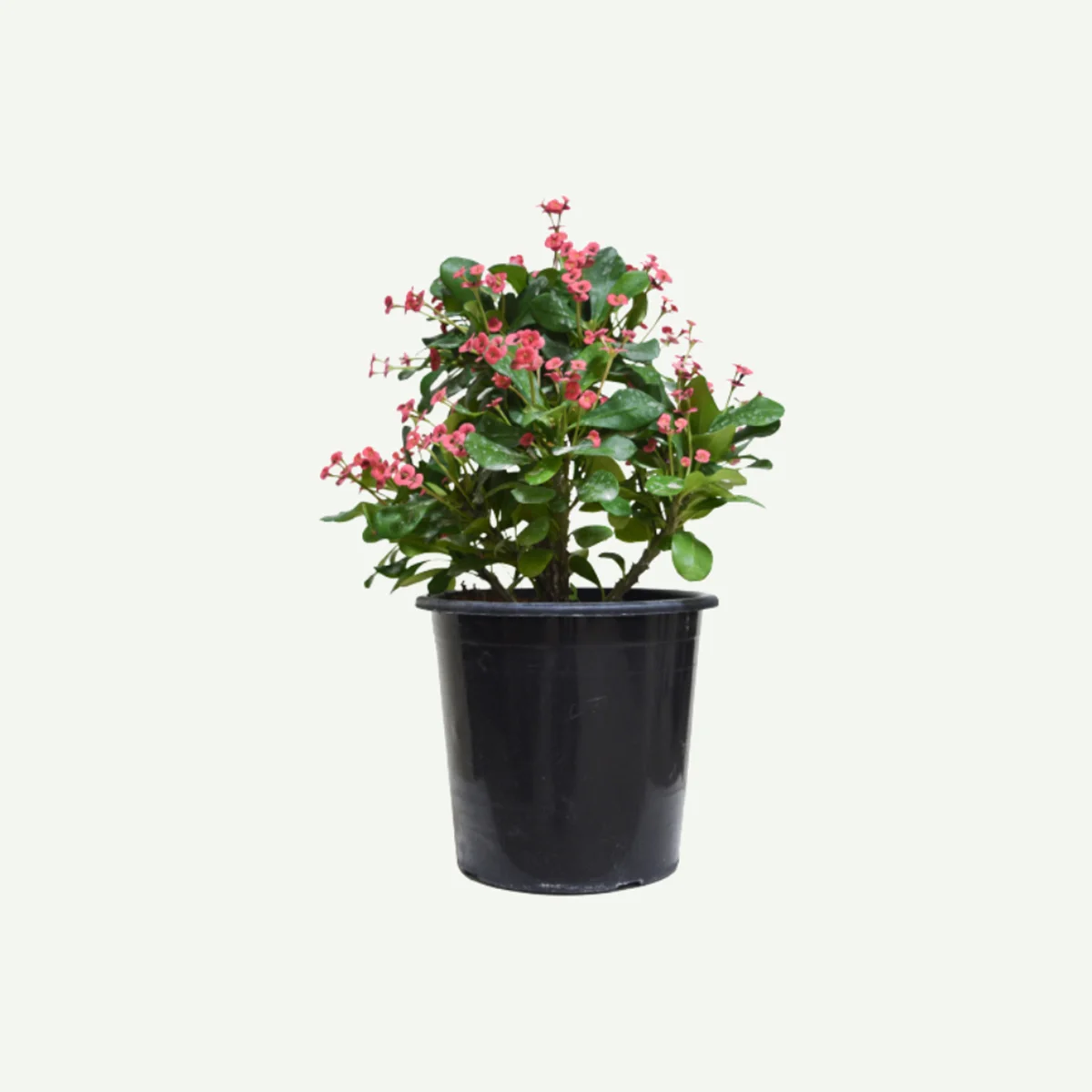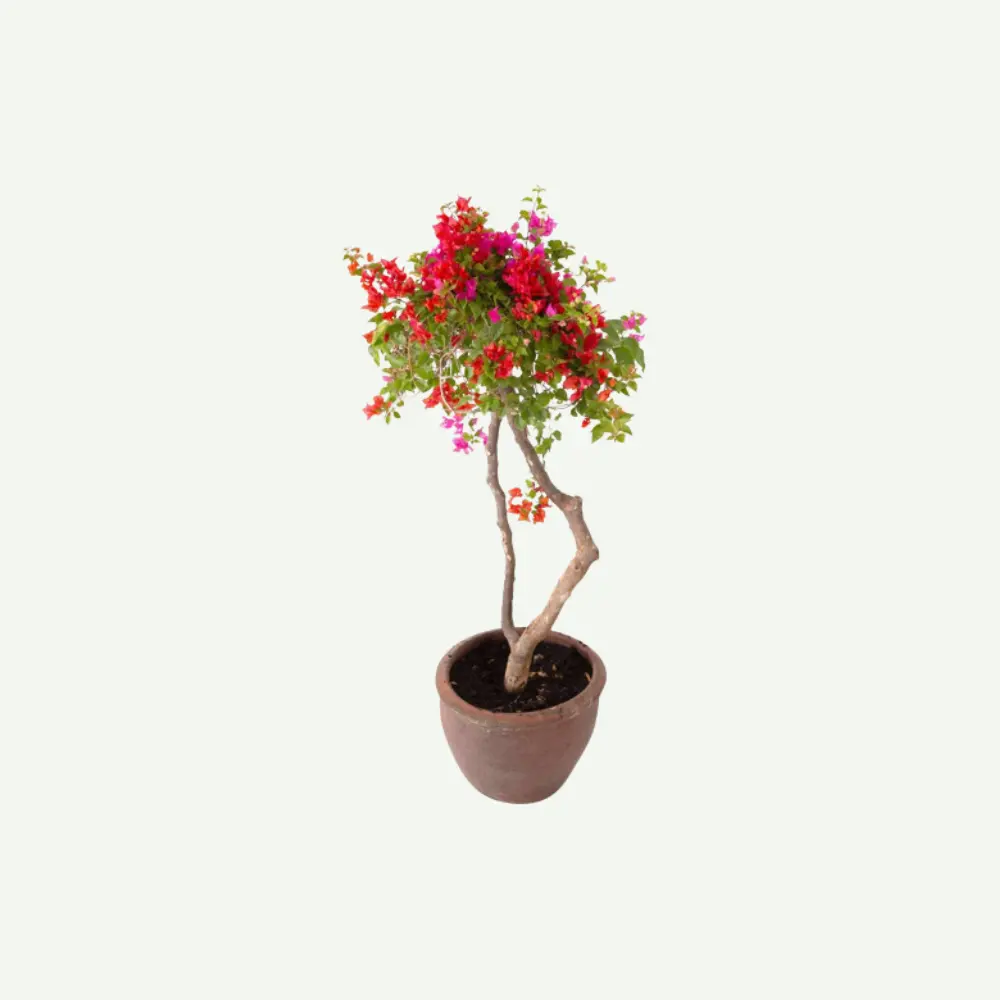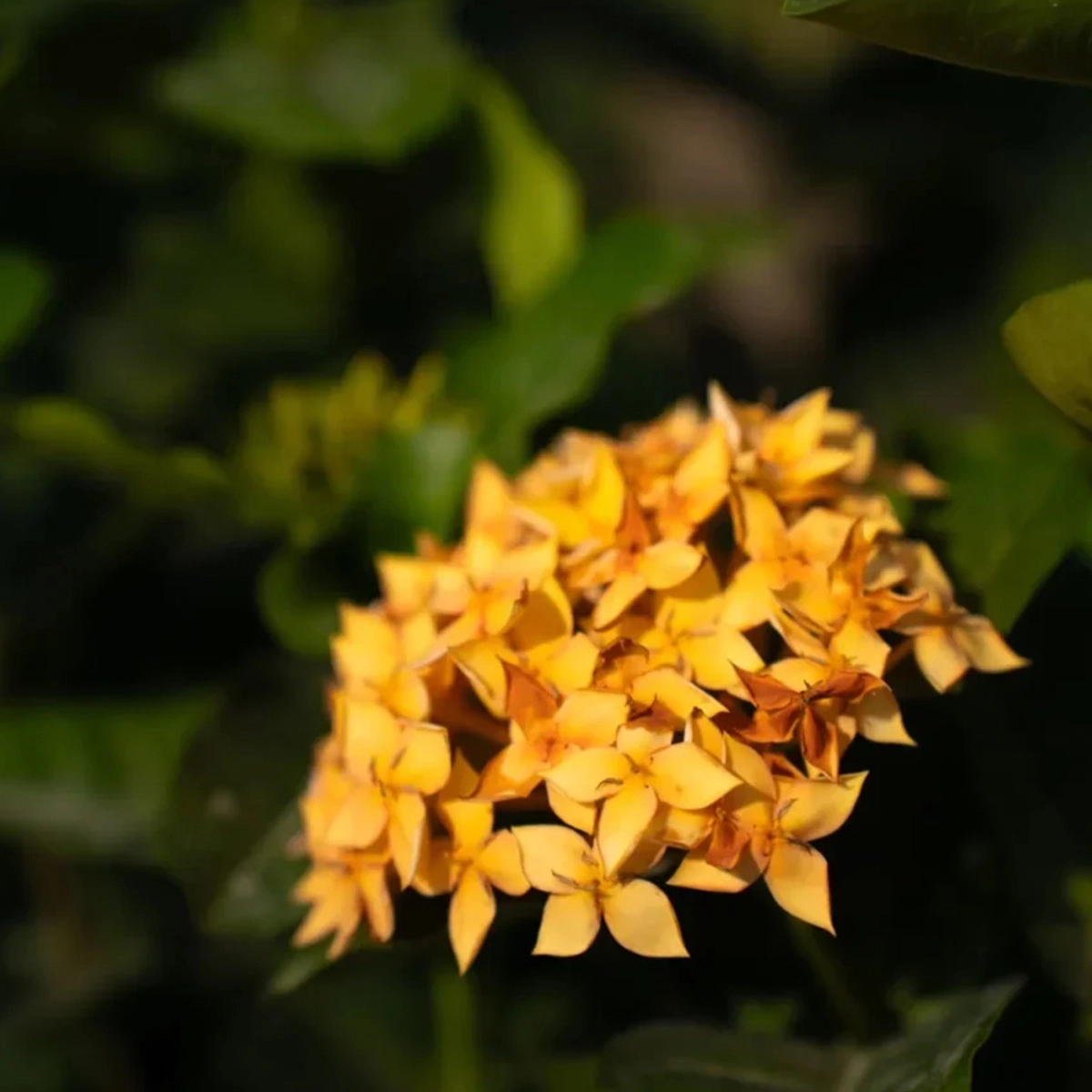Euphorbia milii, commonly known as Crown of Thorns, is a thorny and drought-tolerant succulent shrub from the Euphorbiaceae family. It is native to Madagascar but has been widely cultivated and naturalized in various tropical and subtropical regions around the world. Euphorbia milii is renowned for its vibrant and long-lasting bracts, which resemble flowers and come in a range of colors, making it a popular choice for landscapes and gardens in warm climates.
Landscape Use:
Euphorbia milii is commonly grown as a potted plant or in garden beds in regions with warm climates.
It is popular for adding vibrant colors to landscapes, gardens, and even indoor spaces, thanks to its showy and long-lasting bracts.
Euphorbia milii is also used as a hedge or barrier plant due to its thorny nature, which can deter unwanted intruders.
Caution: It’s essential to handle Euphorbia milii with care due to its toxic milky sap, which can cause skin irritation and is harmful if ingested. Keep it out of the reach of children and pets, and use caution when pruning or handling the plant.
Overall, Euphorbia milii (Crown of Thorns) is a visually stunning and drought-resistant plant that thrives in warm, sunny conditions. Its vibrant and persistent bracts make it a favorite choice for gardeners looking to add color and texture to their landscapes or indoor spaces, while its hardiness and ease of care make it suitable for both experienced and novice plant enthusiasts.
Here’s a general description of Euphorbia milii (Crown of Thorns):
Plant Characteristics:
Bracts: The most remarkable feature of Euphorbia milii is its colorful bracts, which are modified leaves that surround the small, inconspicuous flowers. The bracts can come in shades of red, pink, orange, yellow, and white, depending on the variety and cultivar. The bracts remain on the plant for an extended period, providing continuous color for several months.
Thorns: As the common name suggests, Euphorbia milii has sharp thorns along the stems, which serve as a defense mechanism against herbivores.
Leaves: The leaves of Euphorbia milii are small, ovoid, and clustered along the stems. They are green and serve as the plant’s photosynthetic organs.
Cultural Requirements:
Light: Euphorbia milii thrives in full sun to partial shade. It prefers at least 4 to 6 hours of direct sunlight daily to produce abundant and vibrant bracts. However, it can tolerate some shade, but flowering may be reduced.
Temperature: Euphorbia milii is well-adapted to warm temperatures and can withstand temperatures between 60°F to 90°F (15°C to 32°C). It is sensitive to cold temperatures and should be protected from frost and freezing conditions.
Watering: Euphorbia milii is drought-tolerant and prefers well-draining soil. Allow the soil to dry out completely between waterings. It is better to underwater than overwater, as excessive moisture can lead to root rot.
Humidity: Euphorbia milii is well-suited to low to moderate humidity levels, typical of arid and semi-arid regions.
Soil: A well-draining, sandy potting mix or cactus/succulent-specific soil is ideal for Euphorbia milii.
Fertilization: Euphorbia milii benefits from occasional fertilization during the growing season (spring and summer) with a balanced, diluted liquid fertilizer. Reduce or stop fertilization during the dormant period in winter.






Reviews
There are no reviews yet.